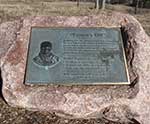Check out these unique destinations that reflect the genuine character of our region.

Elgin Fire Barn No. 5 Museum
533 St. Charles St., Elgin, (847) 697-6242, elginfiremuseum.com
When new cadets join the Elgin Fire Department, one of their first assignments on the job is to spend time at the Elgin Fire Barn No. 5 Museum.
“Their time spent here is to learn from the past,” says Dale Betts, secretary of the museum’s board of directors. “It’s 150 years of tradition and service to the community.”
The museum was the original home for Station No. 5 of the Elgin Fire Department, serving from 1903 until it was decommissioned in 1991. That same year, the building was placed on the National Register of Historic Places.
“You could only get one engine in here, or before that, one team of horses,” Betts says. “You need several engines and an ambulance now to run a good station.”
Today, the historical building is an archive of the city’s collection of fire-related memorabilia.
“When the museum was created 25 years ago, all types of memorabilia were pulled from the corners and crannies of Elgin,” Betts says. “Everything has been donated by past fire personnel and their families.”
Visitors can see three floors of exhibits including an 1869 Silsby Steamer (Elgin’s first fire engine), two other engines, old uniforms, helmets and firefighter tools.
The city’s fire department now manages seven stations and more than 135 firefighters.
“Our museum is used for promotion ceremonies, celebrations of life and for swearing in new firefighters,” Betts says. “The department continuously uses the building.”

Crystal Lake Central High School
45 W. Franklin Ave., Crystal Lake, (815) 455-1151
Crystal Lake residents signed off on the construction of their very virst dedicated high school in 1921, as the city’s population outgrew its original school: a six-classroom brick Gothic structure known as Union School. Three years later, in 1924, Crystal Lake Community High School opened its doors, just down the street from Union School. Students in the first graduating class began the year at Union before making the move to the new high school – just a few weeks before graduation.
In 1928, the school’s mascot became the Tigers, a moniker students still use today. A football field and running track were added to the south lawn in 1934. Today, the field honors Owen Metcalf, who spent 40 years as coach and athletic director.
In the 1950s, voters gave the nod to construct a $1.4 million addition, adding a new field house and nearly doubling the number of classrooms.
As the city’s population increased, a second school building, now known as Crystal Lake South High School, opened in 1978. That same year, the older high school became known as Crystal Lake Central. A third high school, Prairie Ridge, opened in 1997.
Notable Community High School alumni include Charlie Behan, who played for the Detroit Lions and was a World War II veteran. He earned the Navy Cross for acts of valor during the Battle of Okinawa in 1945.

Payton’s Hill, at Nickol Knoll Golf Club
3800 N. Kennicott Ave., Arlington Heights, (847) 590-6050, ahpd.org
At one point, the massive hills at Nickol Knoll Golf Club provided a grueling training ground for Chicago Bears great Walter Payton.
As he prepared for demanding football seasons in the ’70s and ’80s, Payton worked on his strength and endurance upon a hill that was then part of the Arlington Heights landfill. Payton dodged trash, small trees and shrubs as he galloped up the hill.
Nickol Knoll opened in 1995, atop the old landfill. In 2000, the Arlington Heights Park District dedicated “Payton’s Hill,” honoring the late Bear’s accomplishments, which include induction into the Pro Football Hall of Fame in 1993.
According to newspaper clippings at the Arlington Heights Historical Museum, Payton ran from what’s now the third-hole tee box up to the eighth green. That area is still hilly today, but the terrain has been severely flattened. A bronze plaque sits in the general area where Payton ran.
Running up and down hills was nothing new to the former Arlington Heights resident. He trained on steep hills in Mississippi when he was younger, and he continued that routine once he joined the Bears in 1975.
Images of him climbing the 75-yard, 50-degree incline have been seen in old photos and videos, according to newspaper clippings.
Payton died in 1999 from a rare liver disease at the age of 45.





















































